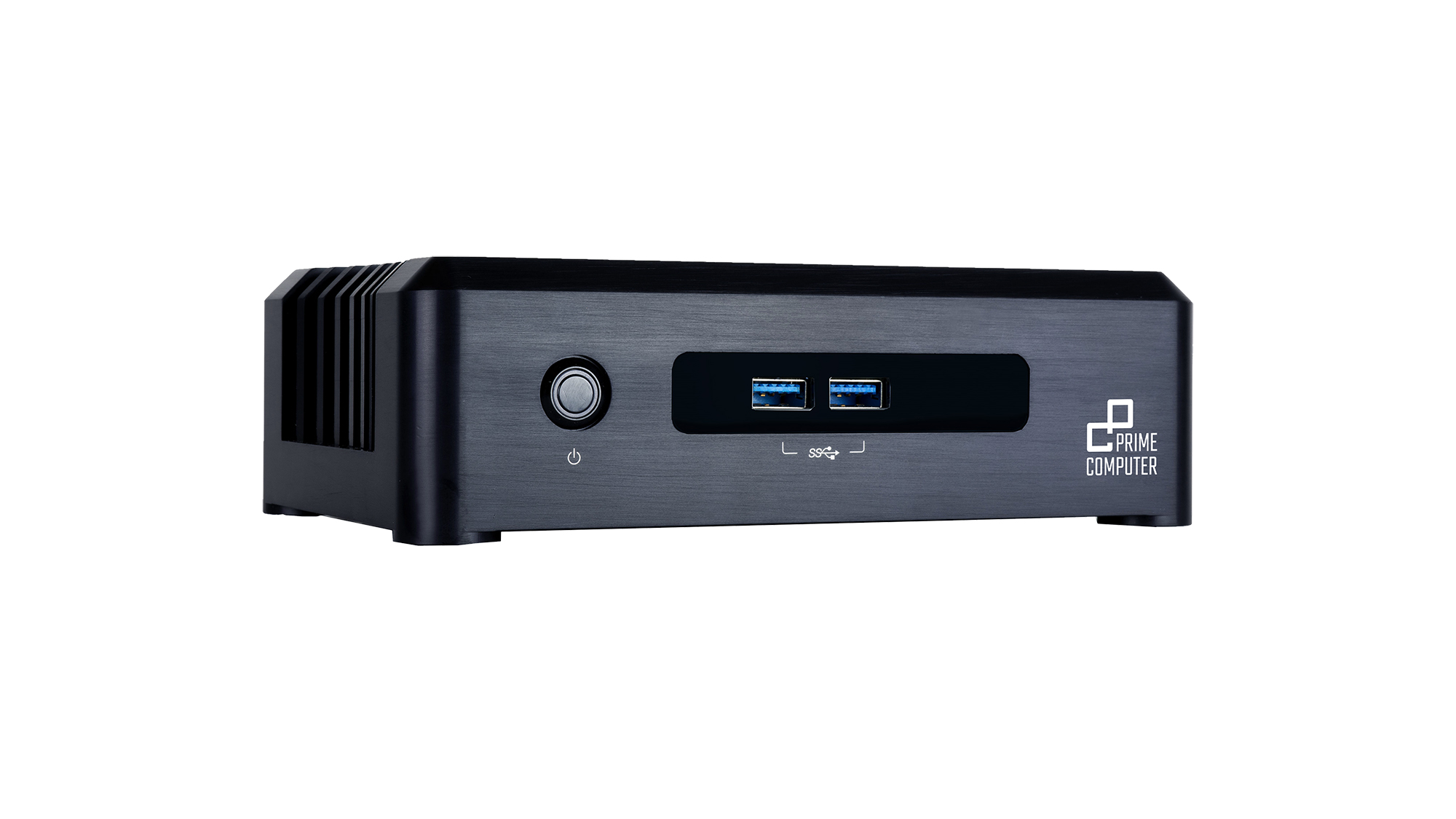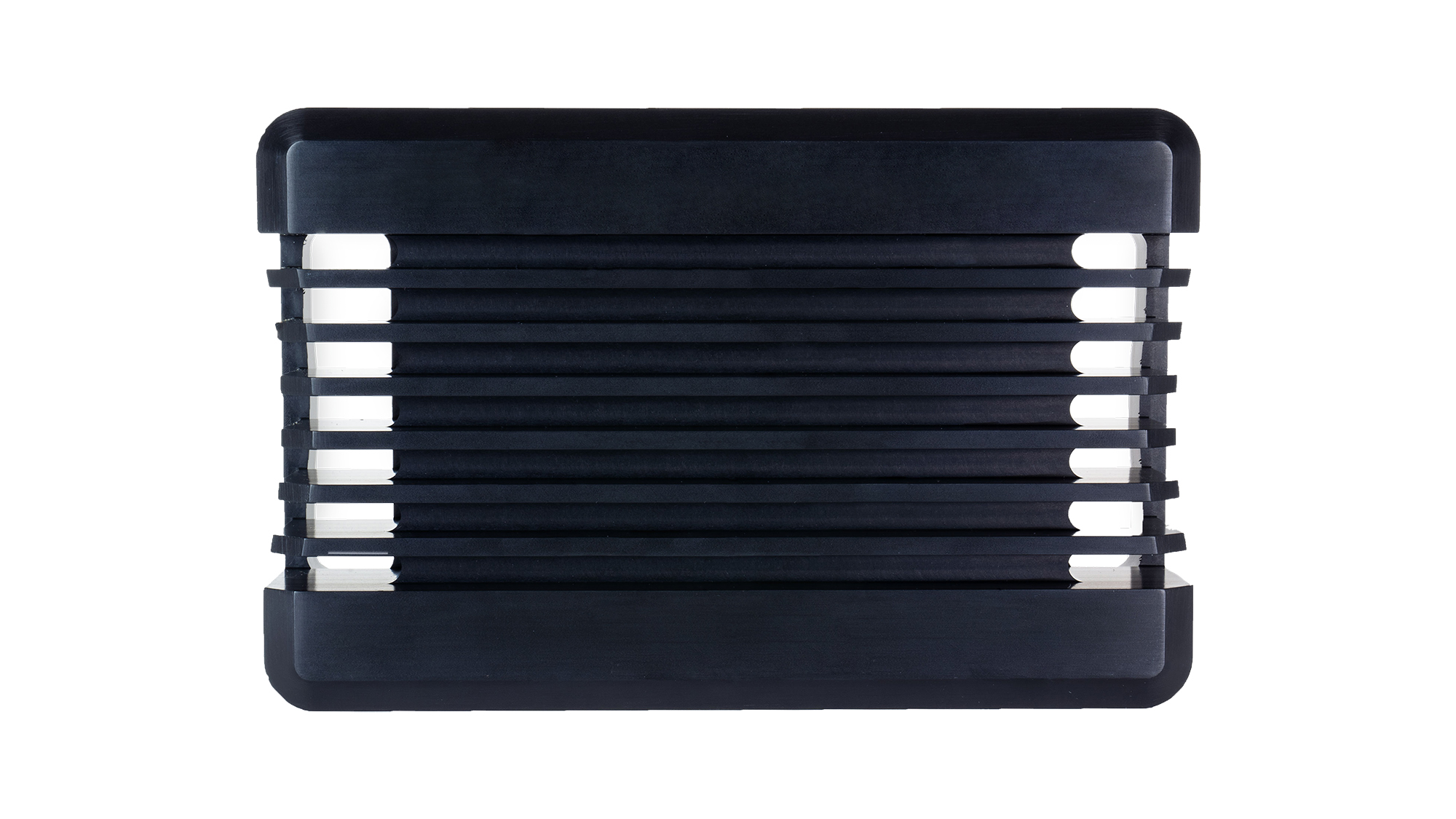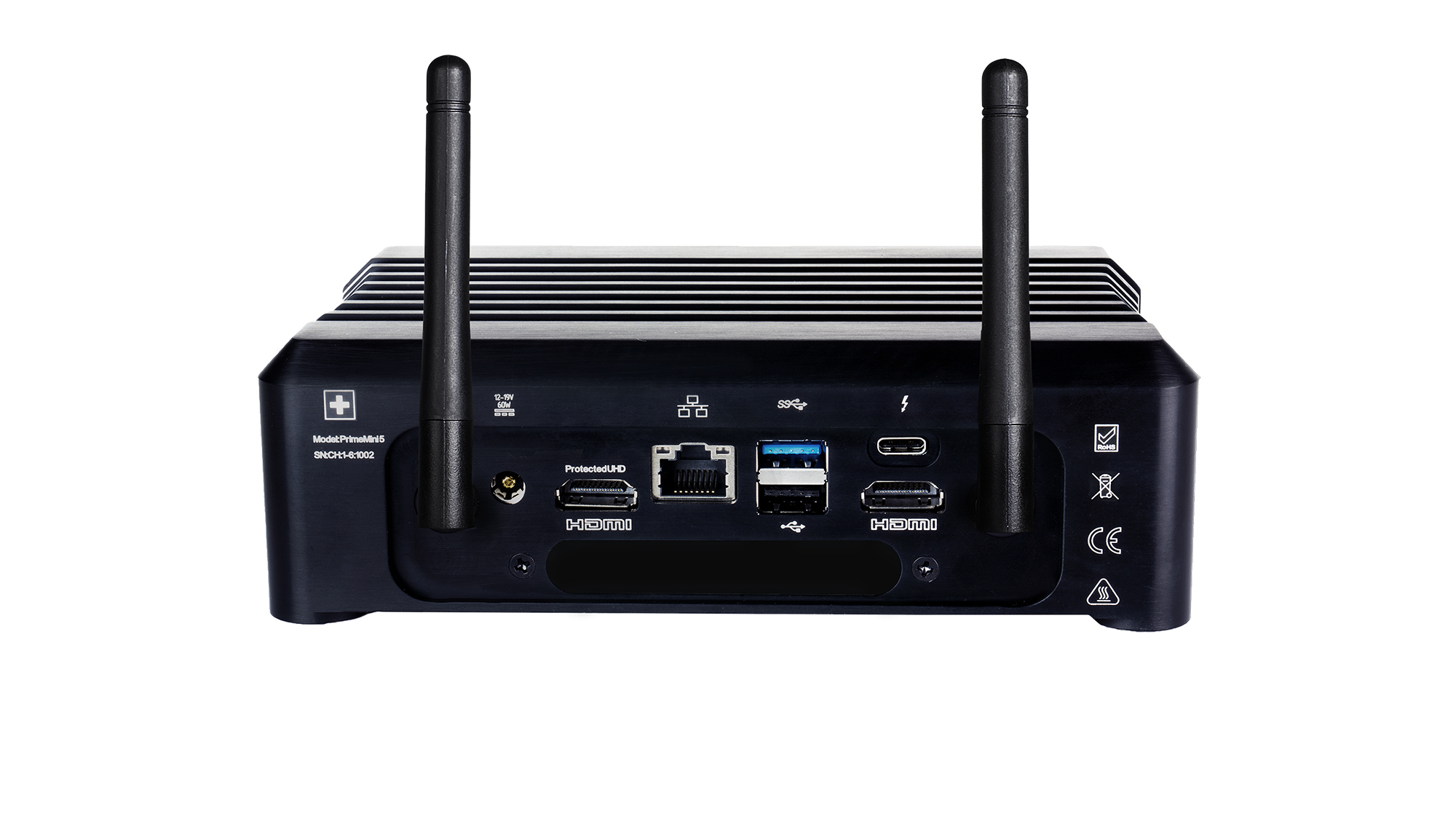Prime Computer PrimeMini 5 review: Green machine
It may have a high price, but this compact and silent PC is extremely cheap to run

-
+
Silent operation
-
+
Sturdy build quality
-
+
Highly power-efficient
-
-
Expensive
-
-
Comparatively underpowered
-
-
Bulky footprint

On first glance, this may look like just another compact business PC, but as the price above indicates, the PrimeMini 5 is trying to do something different. There are a few things that mark this PC out from the likes of the Asus Mini PC PN50, most notably a fanless design and an extreme focus on energy efficiency.
The price may seem steep, but there are TCO advantages of switching from a gas-guzzling desktop PC. With over-powered innards and multiple fans, it isn’t unusual for a PC to consume 80W at idle; the PrimeMini sips 13W in general use and even at its peak draws only 30W. Over the course of five years, that’s a saving of roughly £150 based on typical usage and electricity rates. If you need a computer to stay on all the time – and this is a PC designed with 24/7 usage in mind – then that saving triples to £450.
Prime Computer points out that its fanless design also makes its PC more suitable than most for messy environments such as cafés and medical surgeries. No fans mean no routes of ingress for dust and grease, and it’s easier to wipe clean for the same reasons. The fan is the final moving part of a modern PC, and removing it eliminates one more potential point of failure; according to Prime Computers, its PCs have a 1.2% failure rate compared to 4% for a PC with a fan. Finally, note the five-year warranty – albeit return-to-base rather than on-site.
Finally, the most obvious benefit of switching to a fanless PC is the noise factor. Switch on the PrimeMini 5 and the only sign that it’s operational is the blue LED surrounding the power button. Compared to the sporadic fan noise of the HP EliteDesk 705, that’s a welcome relief.
Prime Computer achieves this by using a low-power mobile processor, the Core i5-8365U. This only needs a handful of watts to keep going at its base 1.6GHz frequency, and a TDP of 15W indicates why this PC’s peak power consumption is so low. You can’t expect raw power, then, but with 16GB of RAM the PrimeMini 5 runs Office apps with no difficulty.

It’s unlikely that typical office tasks (or Windows updates) will trouble this PC during a five-year lifespan, but it would still have been reassuring to have an 11th rather than eighth-generation Core processor inside – this would likely have pushed its overall score in our benchmarks to around 120. As it is, however, the PrimeMini achieved a total score of only 84. That’s capable enough for most tasks, to be sure, but bear in mind that other mini PCs such as the Asus PN50 will offer around twice the performance for half the price.
The PrimeMini’s quoted price includes a 250GB Samsung Evo 860 M.2 SSD, although for testing it relied on a 2.5in Evo 850. These are SATA 3 drives, but you can opt for an NVMe SSD. There’s space for both M.2 and 2.5in SSDs in the chassis and you can fit them yourself, along with the RAM; four tightly fitted crosshead screws secure the base.
One scenario definitely off the cards is graphics-heavy workloads, with Intel’s UHD Graphics 620 accelerator showing its age. Its bright spot was in the OpenGL benchmark of GFXBench’s Car Chase test (offscreen, 1080p), where it returned 31fps. OpenGL apps will take advantage, but once we switched to DirectX games it failed to reach playable rates – even at 720p in the undemanding Dirt: Showdown. More strenuous graphical tasks proved too much for the PrimeMini 5 altogether, with the system freezing.
This is an area where PCs such as the HP EliteDesk have an advantage, and the other is size. While this is a tiny PC compared to the average desktop, most small form-factor PCs are significantly more petite: it’s almost twice the height of the EliteDesk and considerably wider at 177mm. It’s also built like a tank, with an aluminium case that weighs 1.4kg. We’re not sure we’d describe the PrimeMini 5 as stylish, but it’s certainly distinctive. To the untutored eye it actually resembles a compact router, but that’s due to the pair of Wi-Fi aerials that you’ll need to attach at its rear to take advantage of Wi-Fi 5, and sadly there’s no support for Wi-Fi 6.
The system on review includes two HDMI outputs along with Thunderbolt 3, USB-A 2 and a trio of USB-A 3.1 ports, but if you have particular needs then you should get in touch with Boston, the UK distributor. For instance, our review sample (and the price above) includes an RS232 serial port and a second Gigabit Ethernet connector, but this is configurable at the time of purchase.

Indeed, while the price isn’t this PC’s most attractive feature, you should bear in mind it’s for a single unit with this specific configuration. You may not want an RS232 port, you may desire the maximum 3TB storage capacity, you might want a Core i7 processor and 32GB of RAM, and note that bulk purchases will come at a discount. As such, the price we quote is a guide rather than a precise figure.
It’s fair to say that this is a relatively specialised piece of equipment. The high price may put you off using it for office-based deployments, but look at it over a multi-year period and the lowered energy costs start to become a little more attractive. Where this machine is really likely to find a home, however, is as a micro-server, quietly sitting in a cupboard and running a handful of constant applications with minimal fuss while cutting down electricity and CO2 consumption. If you divide the cost by a likely life of five years, that may not be too high a price to pay.
Prime Computer PrimeMini 5 specifications
| Processor | Four-core 1.6GHz Intel Core i5-8365U |
| RAM | 16GB 2,400MHz DDR4 RAM |
| Graphics adapter | Intel UHD Graphics 620 |
| Storage | 250GB Samsung Evo 860 M.2 SSD |
| Graphics outputs | 2 x HDMI, 1x Thunderbolt 3 |
| Other ports | 2 x Gigabit Ethernet, 3 x USB-A 3.1, USB-A 2, RS232 port |
| Wi-Fi | Wi-Fi 5 |
| Bluetooth | Bluetooth 5 |
| Dimensions, mm (WDH) | 177 x 114 x 55mm (WDH) |
| Weight (kg) | 1.4kg |
| Operating system | Windows 10 Pro |
Get the ITPro daily newsletter
Sign up today and you will receive a free copy of our Future Focus 2025 report - the leading guidance on AI, cybersecurity and other IT challenges as per 700+ senior executives
Tim Danton is editor-in-chief of PC Pro, the UK's biggest selling IT monthly magazine. He specialises in reviews of laptops, desktop PCs and monitors, and is also author of a book called The Computers That Made Britain.
You can contact Tim directly at editor@pcpro.co.uk.
-
 Third time lucky? Microsoft finally begins roll-out of controversial Recall feature
Third time lucky? Microsoft finally begins roll-out of controversial Recall featureNews The Windows Recall feature has been plagued by setbacks and backlash from security professionals
By Emma Woollacott Published
-
 The UK government wants quantum technology out of the lab and in the hands of enterprises
The UK government wants quantum technology out of the lab and in the hands of enterprisesNews The UK government has unveiled plans to invest £121 million in quantum computing projects in an effort to drive real-world applications and adoption rates.
By Emma Woollacott Published
-
 Businesses are taking their eye off the ball with vulnerability patching
Businesses are taking their eye off the ball with vulnerability patchingNews Security leaders are overconfident in their organization’s security posture while allowing vulnerability patching to fall by the wayside.
By Jane McCallion Published